Homemade Head Cheese
Of all the recipes that I made until now, if there was one that I really wish my dad could’ve tasted, this would be the one.
He was such a huge fan of head cheese! You should’ve seen the look on his face when my mom returned from the grocery store and he would retrieve a jar of the stuff from the bags as he helped unpack. He looked like someone had just told him that he’d won the lottery or something!
I’m absolutely positive that he would’ve said (and meant) that this Homemade Head Cheese was the best he’d ever tasted.
To be honest, I’d been wanting to make this for a very long time now, but kept putting it off because I was very afraid to face the actual pig’s head. It had been sitting in my freezer since I’d purchased my side of pasture raised pork. The thing is, I had no idea of what to expect when I’d cut open this neatly wrapped package.
Pfft. Had I known! See those beautiful pieces of meat up there? That’s my pig’s head, along with a couple of tongues. Looks like the butcher had taken the liberty of cleaning that head for me: he removed the eyes, brains, ears, facial features and all the stuff that I didn’t really care to see. Heck, he even went ahead and cut it into manageable pieces. In fact, one could barely tell that this was even a head to begin with.
Boy was I grateful for that. And you know what? I’m sure that if you ever decided to purchase a hog head and asked your butcher nicely, he would gladly clean it up for you like that.
Oh, he might ask for a small monetary compensation, perhaps, but I’m sure it would be very minimal and totally worth it. After all, pork head isn’t all that expensive to start with, and the meat that it conceals is so freakishly tender and delicious! Especially after it’s been slow cooked like this.
So what say you? Will you dare try it? At least, take a peek at the entire process, then you can decide for yourself.
You’re not even gonna have to work that hard, I swear.
To begin with, place your meat, veggies and aromatics into a 6 quart slow cooker and cook on low for 20 to 24 hours.
The long cooking time will ensure that you extract as much nutrients as possible out of all those bones and fat.
Once the meat is done cooking, carefully remove it to a large bowl to collect the juices.
See that chunk of meat right in the middle? The one with the little dimple on it? That’s a tongue. Doesn’t look so scary, does it? And it’s pretty much all meat, too. The only thing with tongue is that it has this thick skin that covers it, and that has to be removed.
Frankly though, it removes just as easily, and fairly similarly too, as chicken skin does.
While the meat is cooling some, pass the broth from the slow cooker through a colander and then transfer it to a medium saucepan. Bring that broth to a simmer over medium heat and let it reduce until there’s only about 4 cups left.
Meanwhile, carefully pick the meat from the head and tongue and discard everything that’s not obviously meat.
This is the meat from the tongues alone. Like I said, basically all that needs to be done with tongue is remove the tough skin that covers it. The rest is all beautiful meat like this.
And that is the meat that I got to pick from the head. Can you get a feel of how tender and juicy that is? I’m telling you, if you didn’t know this was head meat and someone served it to you as pulled pork, you would DEVOUR it in seconds. It’s freakishly delicious, I swear!
When all your meat has been carefully retrieved, you may want to pass the bones and fat through a colander to collect all the precious juices that will have released during the picking process and then add those to the ones that are already in the saucepan.
If you have a stand mixer, we’ll put it to good use right about now. Equip the paddle attachment and place all the meat right into the bowl
Add reduced broth and mix on low speed until the meat gets finely shredded and the mixture is evenly combined.
Now it’s very important that you do this ON LOW SPEED, else you’ll send broth and meat flying all over the place and this will be a messy operation, trust me.
Slow and low, baby, that is the tempo!
This is the kind of final texture you should be looking for.
Alternatively, if you didn’t own one of them fancy stand mixers, you could pull the meat by hand using 2 forks (like you would if you were making pulled pork) and then mix the broth right in with a large spoon.
The final texture won’t be quite as delicate and creamy, but it will taste just as good.
Pour the meat mixture into a greased loaf pan or terrine mold (you could also use several individual ones if you preferred) and refrigerate overnight.
To unmold, delicately run a thin blade around the terrine then slightly warm the bottom of your mold by dipping it in hot water for a few seconds.
For even easier unmolding, line your pan with plastic film like I did with when I made this Salmon Terrine. It will leave a few fine lines and wrinkles but your head cheese will come out of there like a charm!
Invert your head cheese onto a plate or wooden board and garnish with fresh greens. Wouldn’t that look nice on a brunch buffet table?
You could cut it into thin slices or simply let people dig at it…
Or, like I said earlier, you could also use little individual molds and serve the head cheese right in them.
Now that I’ve successfully made my very own head cheese, I’m left with one tiny little problem. I really want crackers to spread it on… Real thin and super crispy crackers.
Guess there’s only one thing left to do: find me a good paleo cracker recipe!
Or better yet, come up with one..
Homemade Head Cheese
Ingredients
- 1 small pork head, about 3.5kg | 7.7lb, cut into 2 or 3 pieces*
- 2 pork tongues, about 450g | 1lb
- 1 large onion, skin on, cut into wedges
- 2 carrots, skin on, broken into 2 or 3 pieces
- 2 celery ribs, broken into 2 or 3 pieces
- 5 cloves garlic, skin on, smashed
- 4 sprigs fresh oregano
- 2 sprigs fresh rosemary
- 2 sprigs fresh thyme
- 5 bay leaves
- 12-15 whole juniper berries
- 12-15 whole allspice berries
- 2 cinnamon sticks
- 2 tbsp apple cider vinegar
- 1 tbsp Himalayan salt
- 1 tbsp whole peppercorns
- 1 tsp whole cloves
- 6 cups water
Instructions
- Place all the ingredients into a 6 quart slow cooker and cook on low for 20 to 24 hours.
- Once the meat is done cooking, carefully remove the it to a large bowl to collect the juices.
- Pass the broth from the slow cooker through a colander and then transfer it to a medium saucepan. Bring that broth to a simmer over medium heat and let it reduce until there’s only about 4 cups left.
- Meanwhile, carefully pick the meat from the head and tongue and discard everything that’s not obviously meat. You may, however, want to pass the scraps through a colander to collect all the juices that will have released during the picking process. Add those juices to the ones that are already in the saucepan.
- Place the meat and reduced broth into the bowl of a stand mixer equipped with the paddle attachment and mix on low speed until the meat gets finely shredded and the mixture is evenly combined.
- Alternatively, you could pull the meat by hand using 2 forks and then mix the broth right in with a large spoon.
- Pour the meat mixture into a greased loaf pan or terrine mold (you could also use several individual pans) and refrigerate overnight.
- To unmold, delicately run a thin blade around the terrine then slightly warm the bottom of your mold by dipping it in hot water for a few seconds. For easier unmolding, you could also line your pan with plastic film. However, note that this will invariably leave fine lines and wrinkles on the surface of your terrine.
- Invert onto a plate or wooden board and garnish with fresh greens.
Notes
If you’ve tried this recipe, please take a minute to rate the recipe and let me know how things went for you in the comments below. It’s always such a pleasure to hear from you!
You can also FOLLOW ME on PINTEREST, FACEBOOK, INSTAGRAM and TWITTER for more delicious, healthy recipes!


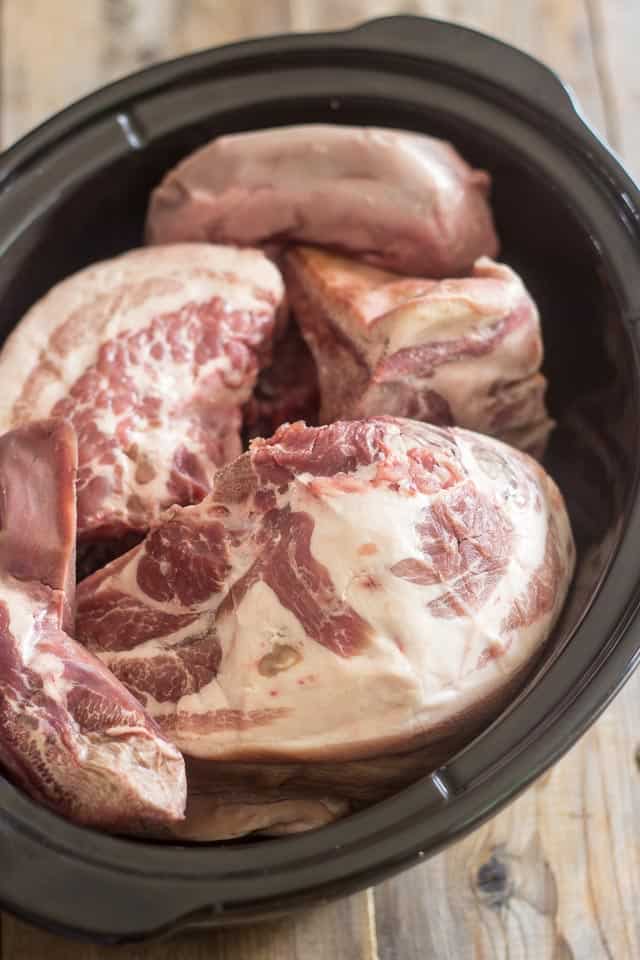
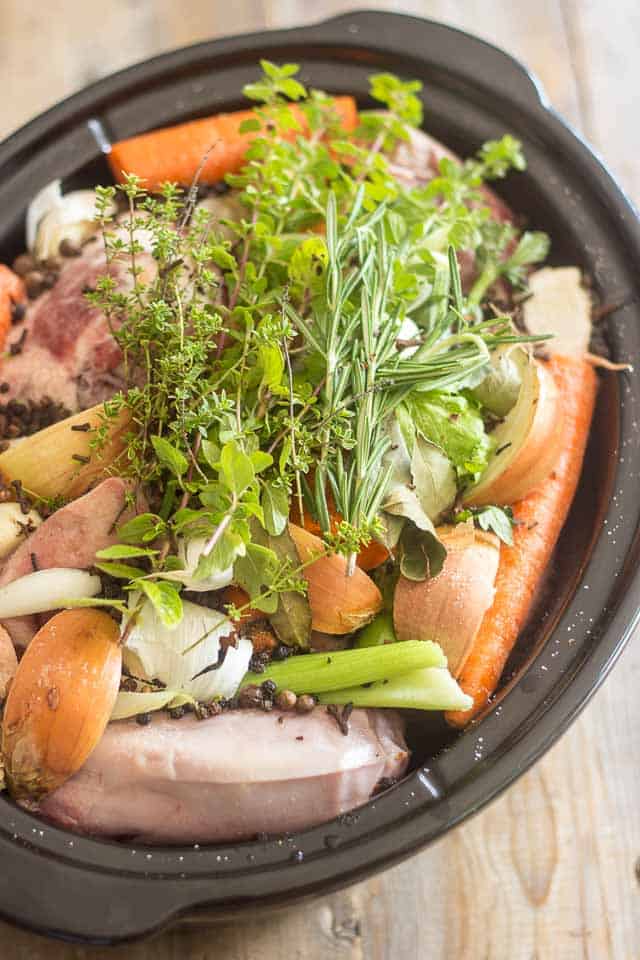









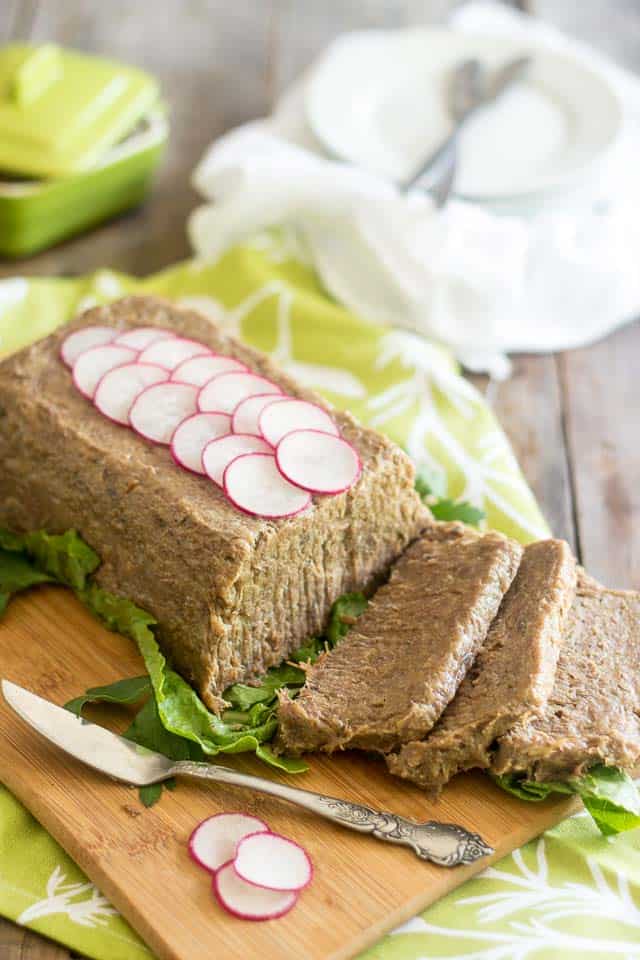




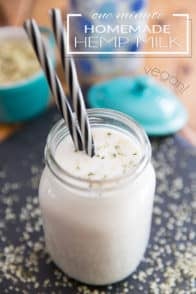






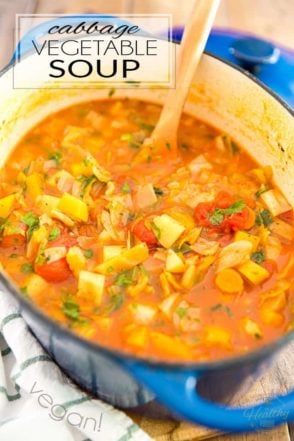


35 Comments on “Homemade Head Cheese”
So does the head meat have any specific nutritional value compared to the other meat that would make it more supetior (like organ meats)?
The Paleo Mom (Sarah) has a cracker recipe on her site.
Have a great weekend 🙂
The head isn’t really considered organ meat, but slow cooking it like this will allow one to get access to all the nutrients from the fat and bones, much as they would from bone broth. Plus, I strongly believe in nose-to-tail animal consumption, so I try and incorporate more and more of these less “popular” cuts of meat in my diet. 🙂
Thanks for the heads-up about Sarah’s cracker recipe. I’ll go check it out right now!
I have never heard (or eaten) head cheese before! Think it is similar to a terrine? I bet its jam packed with flavour too!
It is a kind of terrine, Thalia, and it does taste amazing! I say you really should try it! 🙂
Looks like a nutritious recipe but there’s no way I can ever get a pork head.
Ha! I had a hard time, too, Linda, but I’m trying to broaden my horizons and now practice nose-to-tail animal consumption as much as I can. When I buy my meat, I always that they send absolutely every edible part, including organ meat (liver, kidneys, heart, etc), tongue, tail, fat, bones, and well, in some cases, even the head I guess!
It’s really delicious, I swear. You just need to get past the fact that it’s head meat. If you didn’t know, you’d undoubtedly love it! 😉
You can also use pork Hocks that is what I use all the time. No muss no fuss!
Thank you Jacqueline! I will try that. 🙂
Hi, Sonia…
You turned out a beautiful batch of scrapple, rather than head cheese. Major difference is your butcher kept the gelatinous pieces (ears, snout, etc.) which, when cooked down, turn into crystal clear gelatin. This is what makes the head cheese so attractive – you can see the pieces of lean meat (all the fat boiled off & was skimmed away) thru the gelatin. After cooling 2 or 3 days, it will shrink 1/4″ in all directions & lift right out of your pan. Slice it for sandwiches or cut into spears & pickle with carrots & jalapenos.
Scrapple is more of a complete meal, which will also store, unopened, for 4-6 months in a cool root cellar, basement, or the like.
When cooking it, skim off the fat 2 or 3 times, strain through a dishtowel, & save.
After the meat is tender & seasoned to taste, scoop it into a pan which will leave at least 2″ clear space at the top. After it has cooled for 3 or 4 hours, melt the fat you collected ( you may need more; if so, you can use lard if need be), until it is clear & free-flowing. Pour it over the scrapple, to a depth over the meat to at least 1″. Actually, the thicker the better, as this, like Parowax in canning jelly, is the sealing agent. Gently set the scrapple in a cool place. Next day, cover with a dish towel, and you can store this in a cool, dark place (cellar, etc.) all winter. Once you “open” it, you’ll have to eat it in a week or so, or refrigerate it for a longer shelf-life. You can slice it for sandwiches, fry it for breakfast, put in soups/stews, or cut into pieces & add to a Caesar Salad for lunch. Absolutely delicious and efficient!
That makes more sense to me. I’ve never eaten head cheese but it was always available at the deli. Haven’t seen it in a while. But, it was always gelatinous and very curious. I never even considered trying it, but now that I think of it a bit more, why not? It’s just meat. Whether it’s head meat, brains, offal or whatever, I doubt it’s ever killed anyone to try it. Game on!
Agreed…natural collagen is a must!
This looks like a really interesting recipe. I plan to give it a try.
It was my job to make this when I was growing up and we made it a bit differently.
First of all, we often used calves head instead of pork. We also used the calves feet and, as another commenter mentioned, the ears for their gelatinous texture (and flavor).
We would cook the tongue, brains and other soft parts separately. These would be chopped and added later.
We would take the head and boil it just until the meat was soft to cut off; the soft meat would then be set aside in the refer to preserve it’s “meaty” texture. Then we would return the bones to the stock and cook it until they completely fell apart.
After the bones had fallen apart, we would strain the head and toss the bones and cooked out veggies. We would then remove the fat and clarify the strained stock (egg whites after several passes through cheese-cloth). The result would be a fairly clear brown stock FULL of natural gelatin.
Then we would stir the chopped soft meat that we had saved earlier along with some venegar and/or fresh lemon juice, fresh slightly sauteed spring veggies (calves head is a spring seasonal thing) – spring onions/ramps, roasted red peppers, celery, (sometimes hard-boiled eggs) and other things of the spring hearvest. Fresh peas that had only just sort of glanced at blanching in boiled water was a big fav.
We would then line a meatloaf pan with wax paper or parchment with a lot of excess hanging over the sides. We would pour the meat mixture into this, folding the paper over the top like wrapping a package. We would stack the several pans of this one on top of the other, then top the last of them with a VERY clean brick my mother kept specially for this purpose and put the entire stack in the Refridgerator to “press” into a think pate.
The result was a sort of translucent brown gelatin with meat and veggies clearly visible as we sliced it. Very similar to another of my mother’s specialties (Fresh beef tongue in sweet-pickle aspic).
I will be acquiring a hog head and will be making head cheese. Do you also use the pork skin?
You mean the skin that’s on the head?
Well, I did say I was acquiring a hog HEAD????‼️
Haha! True that! Well, in that case, yes you do.
Can I get a recipe yours looks like my dad’s we
I use a pork butt and pigs feet and pork hocks, for the pig head, have for years and it turns out great, I also use 1 packet of gelatin for every two cups of broth, and I do not pulverize the meat like this, we like pieces of meat in.
Add some pork ears, pork feet,pork hocks and beef hocks and you do not to use gelatin, all the ingredients above will make their own gelatin, no need to use powered stuff.
I always LOVED cow brain–that our maids always made when I still lived in Brazil. The first time I asked my husband if some could be found in our area, he was completely stunned. Perhaps when we next go to Brazil he will try and understand why I wanted to make it. He is not squeamish, but had never heard of anyone cooking cow brain. American’s don’t know what they are missing!
My Polish Grandmother makes a tureen with pigs feet n knuckles/hocks, n it’s called Cold Feet.
Our Polish Deli makes the same thing n also calls it cold feet. They said traditionally Head Cheese is made only from the head. Cold feet is made only from the feet n knuckles/hocks n is cubed meet n vegetables like colorful carrots suspended in the clear jellied broth.
Delish ! We always have this at Easter, especially on Easter Monday when all the left overs are served cold, along with cold cuts, n cold salads like potato, carrot, coleslaw, egg salad, etc. It was the wifes/mothers day off.
I’m very grateful for this recipes, n for the spiced tongue, n stuffed beef heart. Brings back wonderful memories of my grandmother.
Thank you.
Be Blessed.
Why not use the eyes and brain?
What a wussy wushy blabbler blog. I was looking for a recipe, not a crybaby blabber. Thanks to others who actually posted some interesting recipes.
Hahaha! Glad you managed to find a recipe that better answered your needs!
Was looking for a recipe that incorporates oatmeal in it. My German mother & Grandmother made this and I LOVE it. We fried it up for breakfast. Her recipe didn’t have enough spices in it? Any ideas? Will be checking out your site! Congrats on turning your life around girl!!
Carol
Sorry Carol, I’m afraid I can’t help you with that… I’ve never heard of a head cheese recipe that calls for oatmeal. Best of luck finding one, though! 🙂
Look for a recipe for scrapple. It usually incorporates cereals with offal and meat from the head and/or trotters.
Carol—What you describe sounds like my German grandparents recipe for knapp. Made with scrap meats from both beef and pork, oatmeal and various spices, then cut into blocs and frozen, to appear fried crispy for breakfasts all winter long. Have made it with grandparents using scrap meat and with parents who opted to use beef and pork roasts instead. Either produce a “to die for” finished product.
Your recipe looks more like my mum’s home made than any other and I used to love it but she used to make it with half a.cow heel.and I think shin. .it was my grandmothers recipie she was born in the 1880s but my mother who is now 92 can’t remember the recipe. I tried to make it once, it smelt good but didn’t have same taste. Will try your recipe.
This isn’t head cheese.
This looks like a terrine and this is not what head cheese looks like. Head cheese is distinct pieces of meat in a jelly. The jelly comes from those parts that it looks like you either took out or didn’t get…some call them the trotters; pig feet, ears, nose.
In the old days…even older than me…head cheese was made from the leftovers from butchering; specifically pigs. I never did figure out why it was called head cheese….but made properly, it’s very tasty; terrines are also nice tho.
Hello! I’ve been given a pigs head that has already been roasted. And a bunch of lovely bones. Can I still attempt your head cheese recipe with roasted pieces and head? And if so, are there any steps in should skip or shorten since it’s not raw? Help!
My father can only remember”tidbits” to tell us on how to make this. We all absolutely depended on him to make the head cheese, the pig feet etc. So, we are stepping up to try, before he’s gone, to get his take in different recipes, tweaking the seasoning etc. Thank you for sharing this recipe. I made it yesterday (my very first time doing any such with heads. I made scrapple 20 something years ago.) Texture was good, ease of recipe and following your direction was awesome. I really want daddy to be able to taste. I’m wondering what change he might make. Again, thank you! The one thing I did leave out, only because I didn’t have it on hand, the carrots.
You mentioned your mom bought head cheese in a jar? I’ve never seen that. Your recipe looks more like scrapple or maybe souce? The head cheese we make is almost a clear jelitin with chunks of meat in it. Made pretty much the same way.
Can’t wait to try this. My German mother made this type- LOVE it!! SO good!! Remember the first time my kids opened the lid & looked at the head cooking!! I never got the seasoning right. Look forward to yours!!
I have a large amount of broth leftover. Any ideas how I could use this??